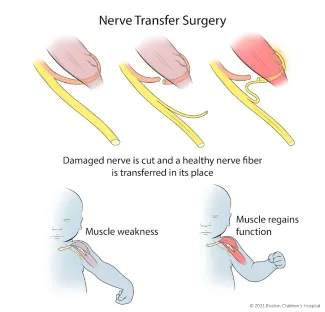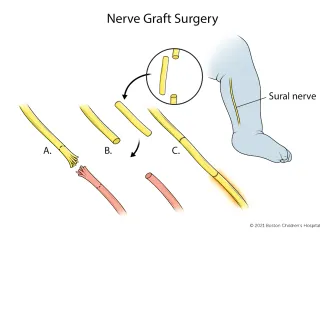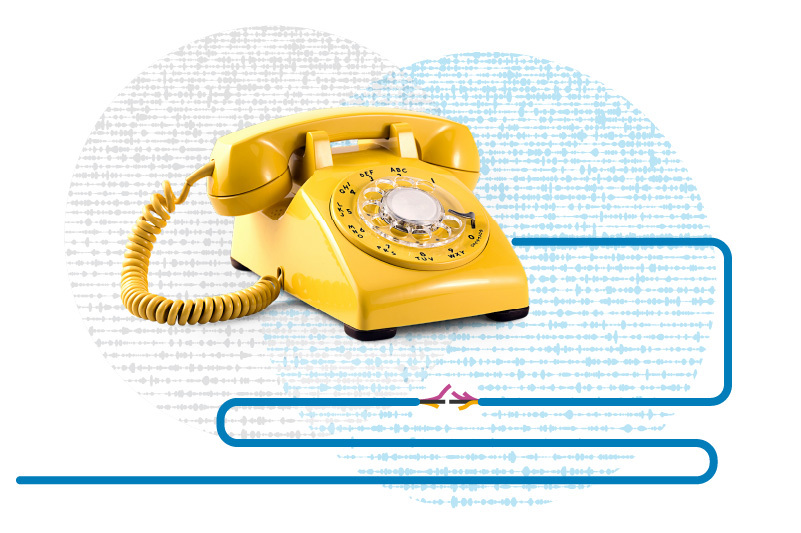Peripheral Nerve Injury | Symptoms & Causes
What are the symptoms of peripheral nerve injury in children and teens?
Symptoms of nerve injury depend on which nerve is damaged and how severely. Some nerve injuries are painful, but other nerve injuries reduce the sensation of pain.
If your child has weakness, numbness, or lost feeling or function, seek prompt medical care.
Nerve injury symptoms may include:
- isolated muscle weakness (one arm or leg is less mobile than the other)
- full or partial inability to move the affected arm or leg
- muscle atrophy (muscle becomes smaller)
- pain
- reduced ability to feel pain
- numbness or tingling
What causes peripheral nerve injury in babies, children, and teens?
Nerves are made up of bundles of fibers surrounded by a protective sheath. These fibers can get damaged during accidents, falls, or sports injuries that stretch, compress, or rupture the nerve.
Nerve injuries can happen in a number of ways:
- Many nerve injuries happen at the same time as bone or muscle injuries. If an athlete dislocates their shoulder, for instance, they may also damage the nerve that runs through the shoulder (the axillary nerve) and not be able to move their arm in certain directions. Dislocating the knee can also damage a nerve called the peroneal nerve, which can lead to foot drop and a loss of sensation in part of the foot.
- During a difficult birth, the network of nerves located between the neck and shoulder can get damaged, a condition called brachial plexus birth injury. This can impair function, and sometimes cause paralysis, in the arm.
- In older kids, stretching or compressing the brachial plexus nerves — during high-impact sports, for instance — can cause burners and stingers. The name describes the burning or stinging sensations that radiate from the shoulder down the arm from this injury. Burners and stingers are almost always temporary.
- Nerve injuries can happen during surgery, for instance, if a child is positioned in a way that stretches or puts too much pressure on a nerve or if a nerve is cut during the operation.
- Some medical conditions such as carpal tunnel syndrome, diabetes, and lupus can cause nerve damage.
- Acute flaccid myelitis (AFM) is a rare condition that affects the nervous system, usually in young children. The condition can progress rapidly, causing sudden weakness that can lead to paralysis in the arms and legs.
Peripheral Nerve Injury | Diagnosis & Treatments
How are peripheral nerve injuries diagnosed?
Diagnosing a nerve injury begins with a physical exam. The doctor will ask your child to move their arm or leg so they can look for signs of reduced mobility. One or more of the following tests may help identify nerve damage and the extent of the injury:
How are peripheral nerve injuries treated without surgery?
Your child’s treatment will depend on their symptoms and the severity of the injury. If their nerve was stretched or compressed, the injury may heal with minimal treatment. Regular follow-up visits are important so your child’s doctor can make sure the nerve continues to recover.
- Your child’s doctor may prescribe medication to manage pain.
- If nerve damage is caused by a medical condition, your child’s treatment may focus on managing that condition.
- Physical therapy and occupational therapy can help restore strength and function in the affected limb.
How are nerves repaired with surgery?
Severely damaged nerves and nerves that have been ruptured or cut can sometimes be repaired with surgery. Nerve repair surgery creates a new pathway for signals to travel to and from the brain and the muscle.
- Nerve transfer surgery reroutes a nearby nerve to fill in for the injured nerve.
- Nerve graft surgery takes a section of nerve from another part of the body to replace the damaged section of nerve.


Nerves grow much more slowly than bones and muscles, therefore, recovery from nerve repair surgery can take up to two years. Physical therapy will help your child’s brain learn how to communicate with the muscle through the new pathway.
How we care for peripheral nerve injuries at Boston Children’s Hospital
As a national and international referral center for brachial plexus injury, the Hand and Orthopedic Upper Extremity Program has treated hundreds of babies, children, adolescents, and young adults with traumatic nerve injury. We work closely with our colleagues in the Department of Neurology, Department of Neurosurgery, Department of Plastic and Oral Surgery, and Pain Treatment Center to ensure our patients with nerve injury receive comprehensive care.


